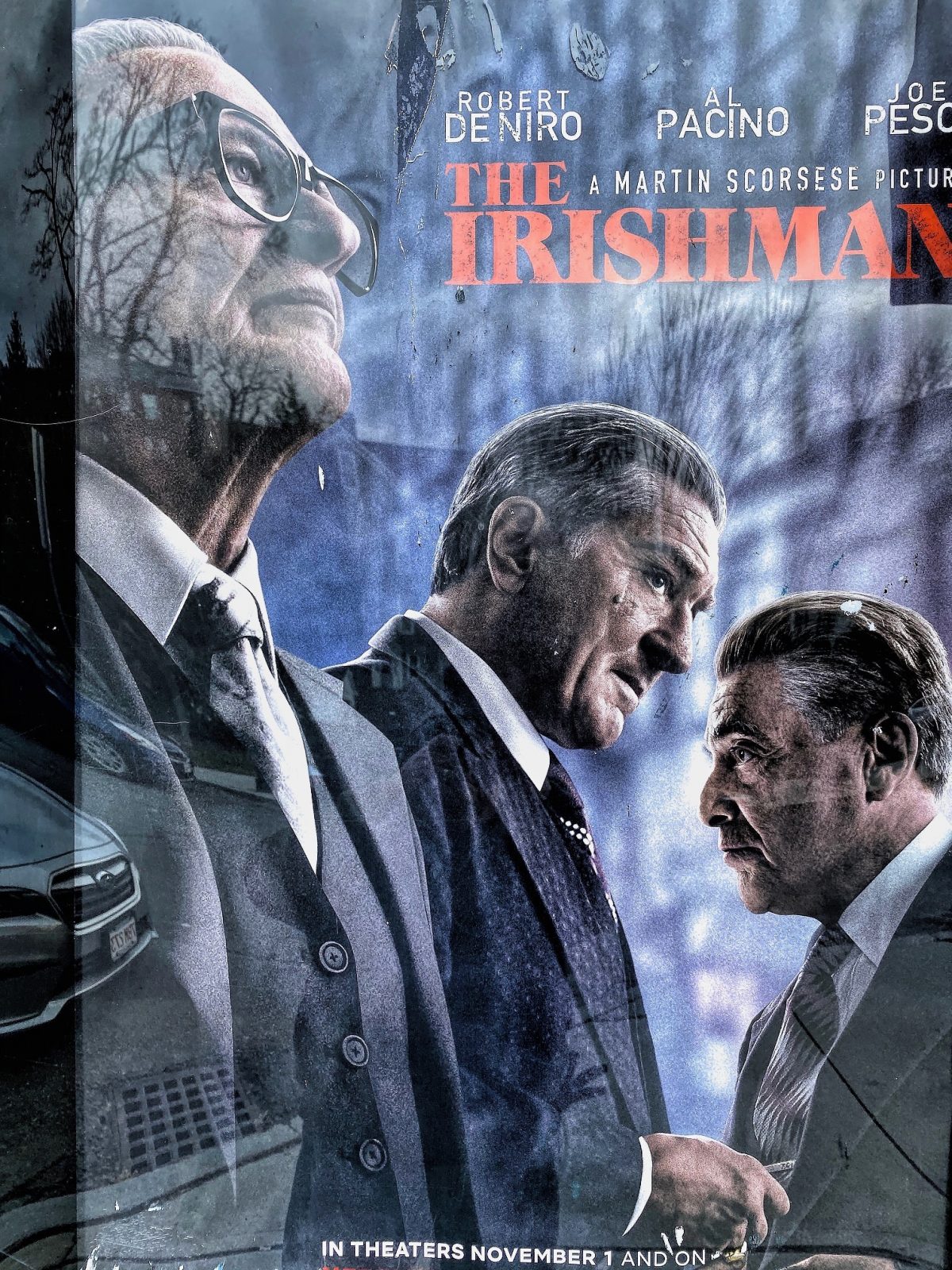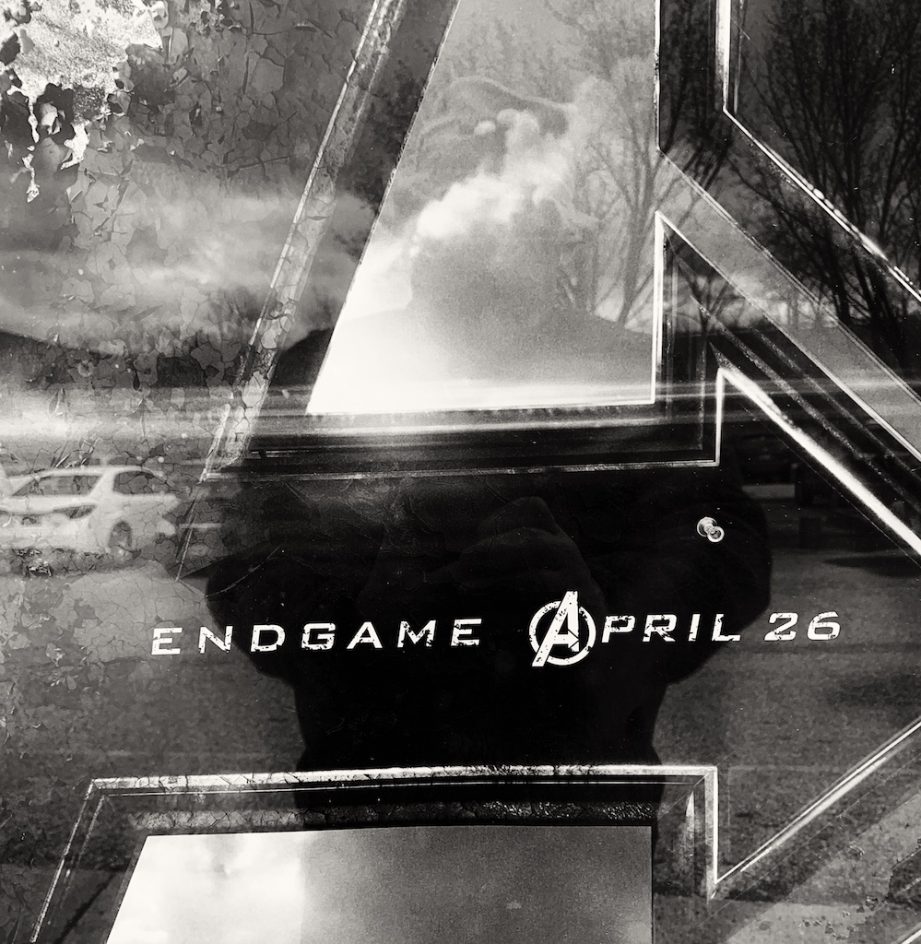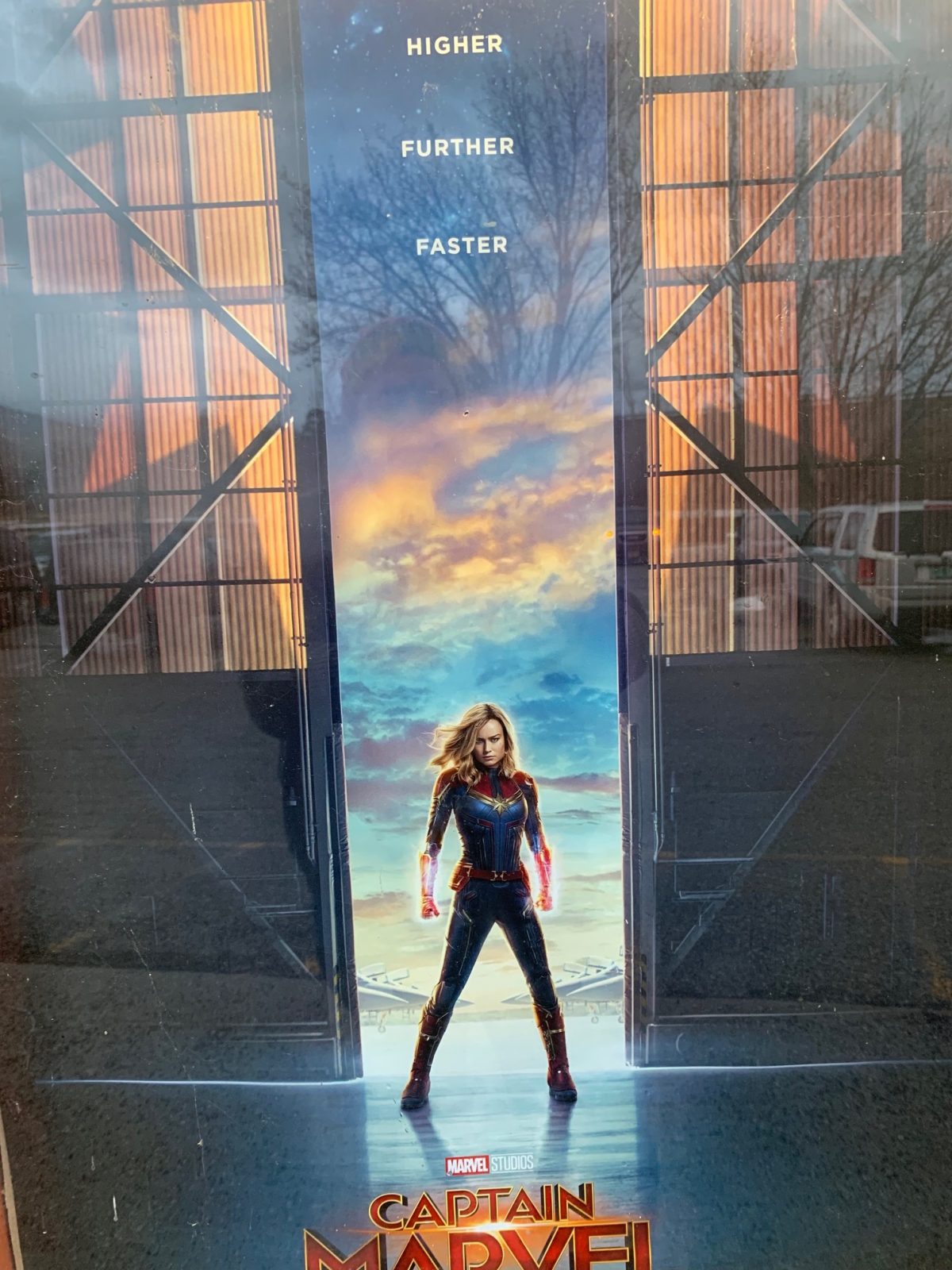Martin Scorcese’s Irishman is an epic mob drama, a great and poignant movie, the kind of expensive and grand movie the Hollywood Studios would never make, but which Netflix did.
It’s out in movie theaters for a couple of weeks and also streaming on Netflix, and says much about the future of moviemaking, to Hollywood and us movie lovers.
The movie is slow, beautiful, and melancholic. I have no crystal ball, but I’d be surprised if it didn’t turn up on future Great American Movie Lists soon. It’s three and a half hours long, yet it didn’t feel too long to me at all.
One critic said the movie was long and dark, like a novel by Dostoyevsky.
I should disclose that I grew up in the heydey of the American Mob, and as a reporter, I met, saw and interviewed several of the characters referenced in the film – Philadelphia Mob Boss Angelo Bruno, Teamster President Jimmy Hoffa, Philadelphia Mayor Frank Rizzo, Atlantic City Boss Skinny D’Amato (discoverer of Frank Sinatra and Martin and Lewis.)
I can say that Scorcese has done his homework, he gets these people, their culture, their language, their inverted morals and their love of family.
I can imagine that some people, weaned on the Superhero Era, might find the movie dawdling and even borning.
It never wavered for me, and what a fantastic film that showcased the great cinematic actors and chroniclers of organized crime, Scorcese (Goodfellas, Casino, Gangs Of New York) and Robert De Niro, Joe Pesci and Al Pacino.
I have little patience for too long movies, but this one didn’t feel nearly as long as it is, it just flowed and flowed and carried the audience along.
All of these actors were great, and thanks to the miracle of digital de-aging technology, the trio – all in their 70’s now – reunited for this sweeping story as it spans six decades.
The story is framed around a mob “peace mission” – a 1975 road trip from Pennsylvania to Michigan with frequent cigarette breaks and bloody flashbacks. The violence is the movie is restrained and not jarring if that matters. The Joker and Spiderman are a lot more bloodthirsty.
In tone and pace, The Irishman is very different from Goodfellas, although the dialogue in this movie is brilliant and genuine, as it is in most Scorcese films.
The movie tells the story of Frank Sheeran, a second world war veteran turned thief, fixer, and killer.
Scorcese has chosen to use Sheeran – a bodyguard for Hoffa – to tell the story of Hoffa’s rise and fall as head of the powerful Teamster’s Union and his mysterious and still unsolved disappearance. He was presumed to have been murdered.
Pacino plays the volatile Hoffa as an over-the-top madman who sees Sheeran as a son. Like all mob bosses, he senses he will one day be betrayed because everyone in every mob movie is ultimately betrayed.
Pesci, who is returning to movies after a 15-year absence, was terrific, he was soft-spoken, statesman-like and patient, human and evil at the same time playing Russell Buffalino, Frank’s closest boss and friend.
The movie has a lot of funny dialogue, full of wise guy lore “You charge a gun; with a knife, you run,” and it “is what it is,” which means run for your life.
Frank (De Niro) is the narrator, speaking from a nursing home in Pennsylvania, sometimes speaking directly into the camera documentary style.
“But the mood is different this time around,” wrote A.O. Scott in his review in the New York Times, “even if we recognize a few of the faces. The anecdotes, some of which are funny, some horrifying, are edged with a bleak sense of absurdity and shadowed by the rapid onset of oblivion. Death is close at hand.”
The movie, for all its sweep and skill (the transitions are managed smoothly), has a somber tone running through it, like a stream or railroad track.
This culminates in the last bleak half-hour, which is heartbreaking. Our heartless hitman loved and protected by some vicious supporters, is reduced to hobbling on his walker to unsuccessful beg his daughter to talk to him.
In most movies and TV shows that deal with family, the end would have been their miraculous coming together.
The man who showed no mercy to so many people in his lifetime gets none at the end of his own life. We think of these people as powerful and strong.
But Scorcese challenges us to think of what they become. They can be frail and disappointed too.
The film opens with Sheeran in his 80’s, frail and lonely (his wife has just died, and his favorite daughter hasn’t spoken to him in decades). Sheeran is a cold fish in many ways, willing to kill and kill for his mob friends and mentors, but as he ages, he finds himself looking back on his life with a mixture of pride and regret.
The movie is well worth it to see De Niro, Pesci (who was terrific) and Pacino act for several hours. But beyond that, the movie is enthralling, chilling but not nearly as violent as a Superhero movie; I’d call it a long-form grand slam, a knockout.
One thing that stands out is Scorcese’s much-document lack of women at the heart of any of his work (except maybe for Sharon Stone in Casino).
The digital facial and aging software didn’t bother me; it was barely visible much of the time. The women here either melt into scolds or enablers or are just standing out of their husband’s earshot smoking.
This long and hard-hitting movie seems almost glaringly out of sync with movies these days. There have been some influential books and stories written about the women in this crime, and the agonies and humiliations of their lives.
The film has a stately and sweeping feeling; it is beautifully shot and ripples like a great wave coming into shore from miles out and then rolling back.
The movie has an epilogue feeling to it.
It is also a reckoning and grand vision of the rise and fall of the once vibrant American subculture we called Organized Crime (a dull name for what it was), but it also offers a mirror of one chapter in America’s turbulent, violent and intense history.
We tend to think our political troubles are new, but they are not, they are quite familiar to historians and people with long memories.
Hoffa is a subtle kind of Trump stand-in, his followers, blindly cheering on his corruption and abuse of power in the million-member union, whose members would look right at home shaking their firsts and roaring angrily at a MAGA rally in Kentucky.
Thirty years after his classic Goodfellas, Scorcese has plenty of fascinating mob stories to tell in creative, even stunning ways.
All of Scorcese’s mob stories are love stories, surprisingly.
He loved the dons and foot soldiers of the American underworld and took the time to get to know them. He always saw them both as human and vulnerable, even as they murdered and robbed without much shame or hesitation.
Part of the genius of The Irishman is his understanding of the mob criminals of post-war America as being all about family; their crime family, but also their wives, sons, daughters, and friends.
Everything they did revolved around their ideas of family.
They loved, protected, betrayed, and cared for one another in ways that make the murderers of our time seem even more hollow and soulless. At least they killed people for a reason, not because they were shopping or in church.
Even though the movie does not emotionalize or excuse their murders and cruelty, I found myself missing them. They did not slaughter innocents.
They are so much more understandable – and ethical – than the machine-gun toting bad guys of today.
Organized crime movies prove the relevance of Hannah Arendt’s theory that evil is banal, not dramatic.
Scorcese gets that idea.
As a killer, Sheeran is very good at what he does.
When he heads out to kill a renegade mob boss – Joey Gallo – in New York City, while he is celebrating his birthday with his family, he reminds himself to wound, not kill, Gallo’s bodyguard.
The guy doesn’t deserve to die, he says thoughtfully, he’s just doing his job. So he shoots him in the arm.
It’s hard to imagine any terrorist or bigoted nationalist or online troll being so considerate of their victims.
Frank Sheeran is a complex and compelling character. DeNiro does him justice.
I think the movie is a remarkable achievement and a moving one. This movie flows gracefully and even gently.
Age and death do hover over the movie.
Scorcese and his stars are septuagenarian actors slowing down and fading from the spotlight. You can’t help but feel they were all making different statements about where they are in their own lives.
I think of the movie not only as a knowing homage and testament to the lost and soon forgotten wise guys of the mob, but also as a kind of the last look, a farewell. The story of organized crime in America is a riveting chapter in our country’s bloody history, which never seems to end.
But the surprise to me is that what powers this movie is love and empathy.
Even as Sheeran kills, Scorcese can’t help but show us his fears, confusion, and broken moral compass. As played by DeNiro, Frank Sheeran is both savage and pathetic.
As he struggles late in life to regain the love of his daughter, he is wholly bewildered about why they are fearful of him, and horrified about what he has become.
Scorcese loves his wise guys and only gets better and gentler at portraying them. He seems to be telling us in this movie that maybe they were not so tough and not so wise. They all seemed frail and vulnerable to me.
I think this is a great American movie; I wouldn’t miss it. If you can, get to a theater and see it on a big screen. If not, it’s already on Netflix, and good for them for funding it and letting Scorcese do it his way.
I can’t quite imagine any other filmmaker would try to top this look at the bad guy culture in America; it has a last word kind of feel to it. See it if you can.





